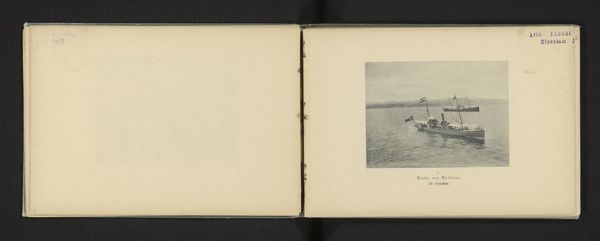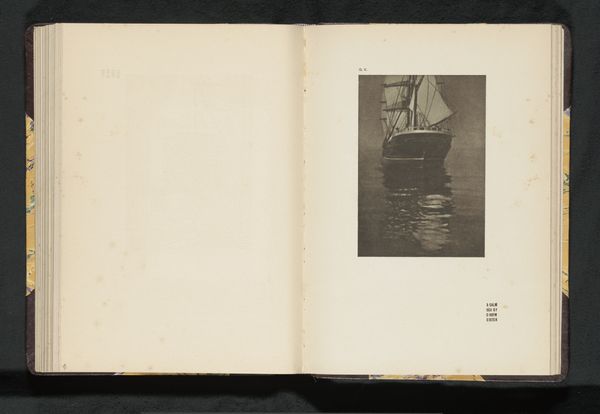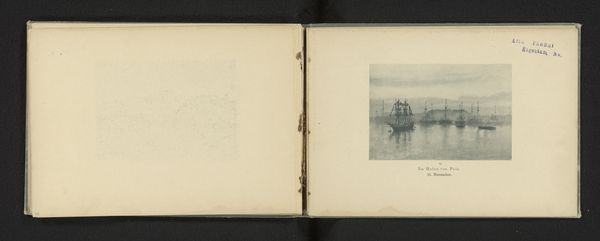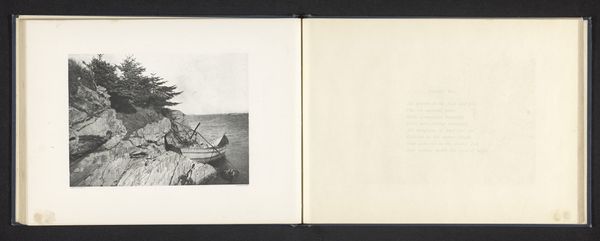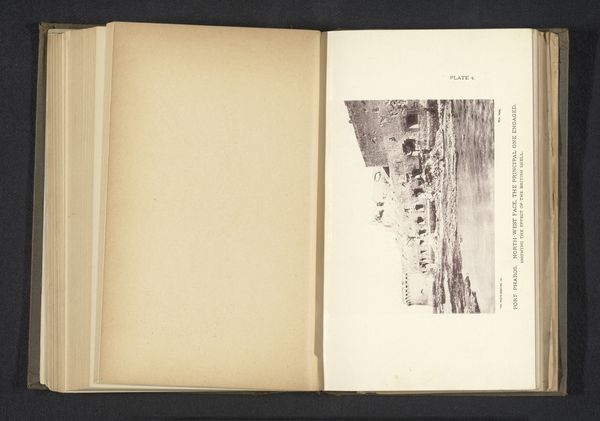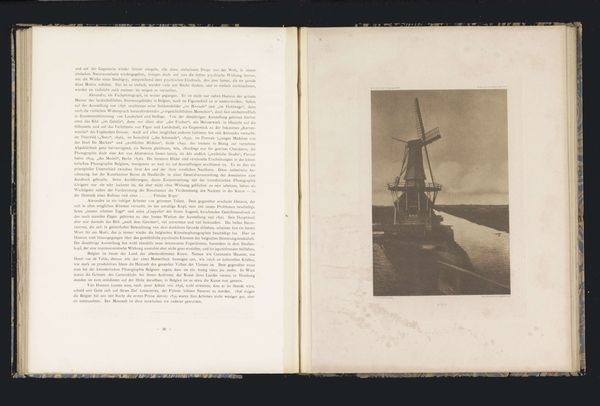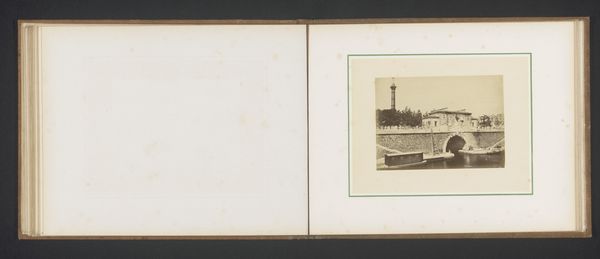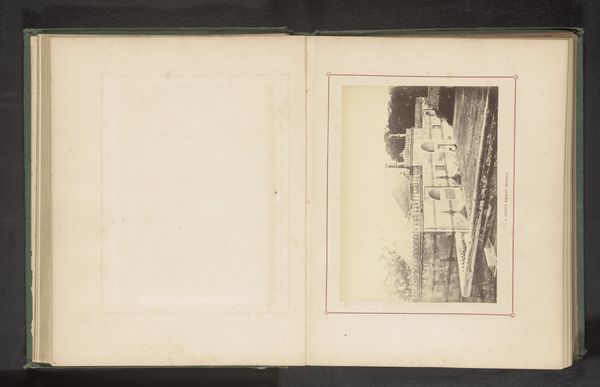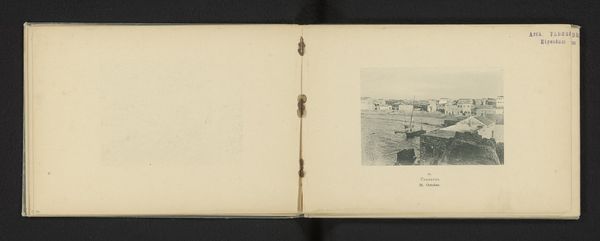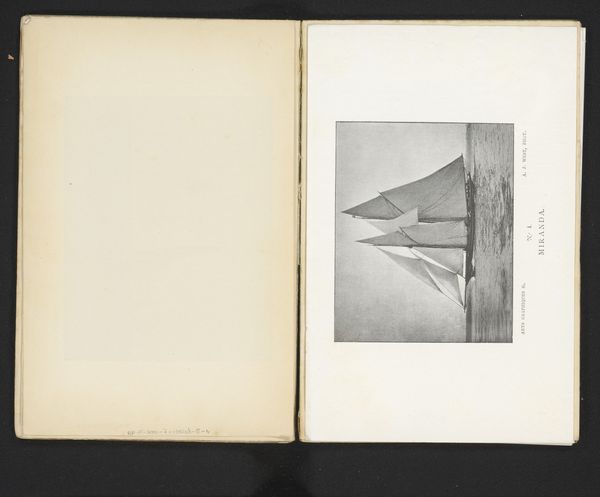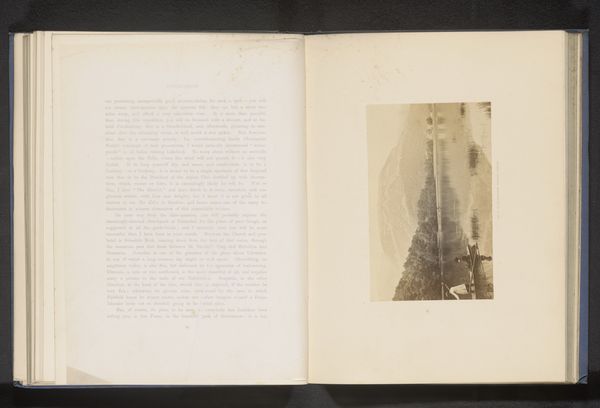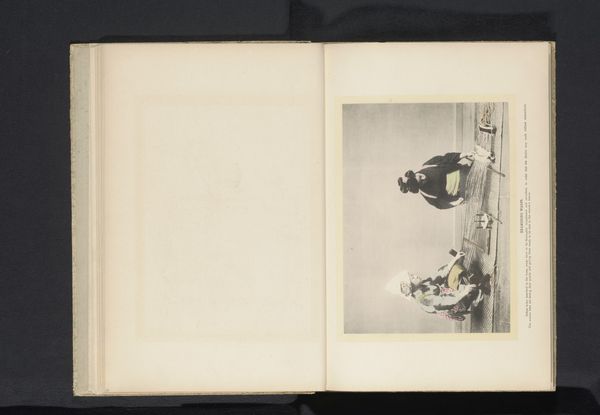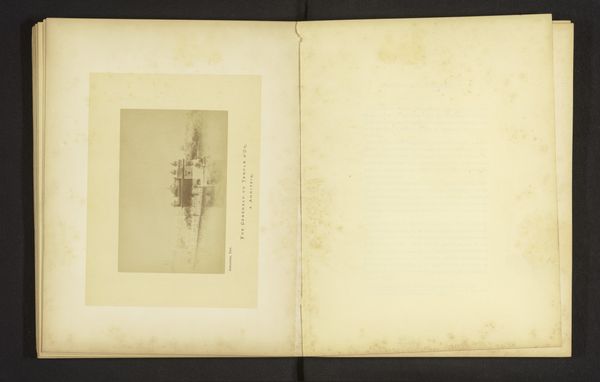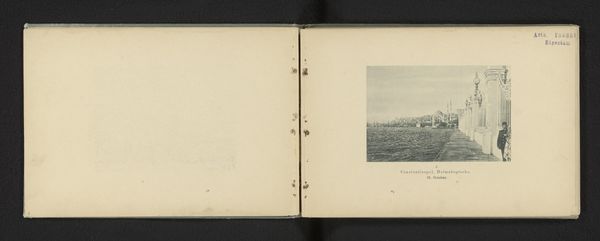
Keizer Wilhelm II van Duitsland aan boord van de S.M.Y. Hohenzollern voor de kust van Jaffa, Israël before 1899
0:00
0:00
photography, gelatin-silver-print
#
portrait
#
landscape
#
photography
#
gelatin-silver-print
Dimensions: height 89 mm, width 119 mm
Copyright: Rijks Museum: Open Domain
Curator: Let's examine this gelatin silver print depicting Kaiser Wilhelm II of Germany onboard the S.M.Y. Hohenzollern, taken sometime before 1899, off the coast of Jaffa, Israel. What are your initial thoughts? Art Historian: The scene appears staged yet intimate. There's a definite aura of power emanating from this Wilhelm. His positioning high above the coast suggests dominion and a calculated perspective of colonial authority. Curator: Indeed. The composition, even in its staged quality, highlights Wilhelm's perceived authority. It's interesting to note how the photograph itself serves as a form of propaganda. The medium allowed for a relatively democratic spread of these images. Who, exactly, was this photo trying to influence? Was it aimed towards the emperor’s supporters at home? Or was it also used as an indicator of influence directed towards those populations the empire sought to control? Art Historian: It’s fascinating to see the historical context of this photo – Germany seeking to establish itself on the world stage, competing with other colonial powers. The imperial yacht itself becomes a symbol of Germany's ambition and technological advancement. A carefully controlled image of modern leadership. How much of that performance was for an international audience, and how much was for the gaze of the population back home in Europe? Curator: I think it all reflects Germany's calculated attempts to insert themselves as significant players in global politics. Looking at the photograph through a post-colonial lens allows us to deconstruct the romanticized narrative of exploration and development by unveiling the mechanisms of domination embedded in what looks like mere travel documentation. The power dynamics visualized in the piece speak of a greater framework of societal inequality, suggesting conversations about present neocolonial structures too. Art Historian: Yes, the composition almost glorifies colonial presence and ambitions while ignoring local experiences. Curator: For me, it exposes the intersectional aspects of power and identity within a visual language of the period. The photo is evidence. Art Historian: It's quite interesting, that. Analyzing photographs such as these as historical objects highlights how meticulously constructed visual representations were employed for political ends during the era of expanding empires. This changes the narrative of this artwork completely.
Comments
No comments
Be the first to comment and join the conversation on the ultimate creative platform.
